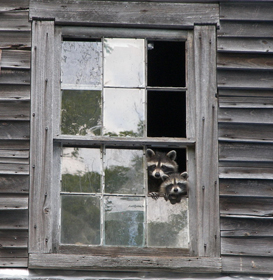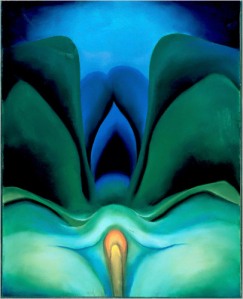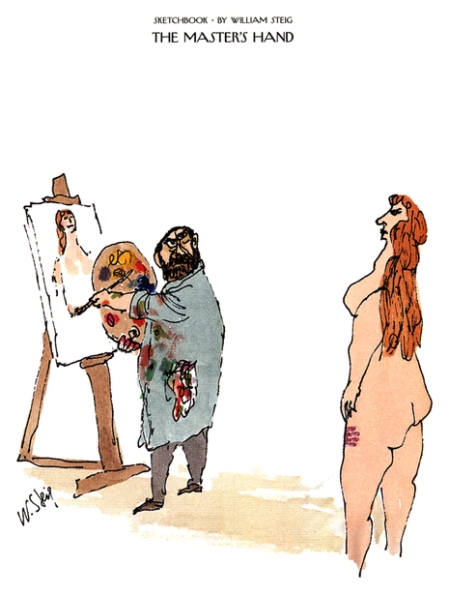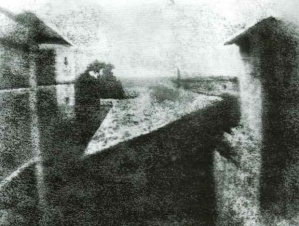 From a recent trip to San Francisco. Other comment would be superfluous.
From a recent trip to San Francisco. Other comment would be superfluous.
San Francisco Street
Posted February 25, 2010 by nakedlandscapesCategories: Art
Tags: Art, Great Art, San Francisco
The Nude in the Window
Posted December 3, 2009 by nakedlandscapesCategories: Edward Weston, humor
Tags: Edward Weston, nude in the window
The nude in the window, especially the nude in the window of an old house is an old theme now in photography. Probably it started with this photo made by Edward Weston.

But almost everyone has experimented with the theme or done slight variations. Here are a couple of examples.
And another from the genre:
Mostly, they look a lot alike and seldom do you see an interesting variation on the theme.
But here is my current favorite. It comes, interestingly enough, from this year’s National Wildlife Federation photo contest. Heidi Tibbets discovered a truly original departure from the cliché.
Happy Thanksgiving
Posted November 25, 2009 by nakedlandscapesCategories: humor
Tags: Contax G2
Happy Thanksgiving. In case you’re interested, there is an auction on eBay for a Contax G2 that includes this description:
Pristine Mint Spotless Contax G2 Camera Body. Looks unsued.
I like my cameras unsued, don’t you? I worry that the one I bought earlier in the week might have been sued at some point in its career since there was nothing in the description about it.
Nudes on eBay
Posted November 23, 2009 by nakedlandscapesCategories: Art
Tags: Alfred Stieglitz, eBay, Fine Art Nudes, Georgia O'Keefe, Nudes
I would really like to take a break from the day job. That will require, however, that I sell some photographs, a daunting prospect. So commonplace that it has become cliché, to sell a piece of art for a significant sum of money the artist must do two things: First, he must create art and then he must die.
I am at work on stage one, but am not willing to go to step two quite yet.
Actually, I prefer Stieglitz’s definition of art. He said to Georgia O’Keefe, “It isn’t art until somebody buys it.” At least that is what Stieglitz, as portrayed by Jeremy Irons in the biopic of Georgia O’Keefe that recently aired on Lifetime, says to her. If you saw it, you got a pretty good idea of why O’Keefe refused to live with Stieglitz and moved to Taos. The move wasn’t just for her art, it was also for her sanity. Stieglitz was a good photographer and a great marketer of art but a lousy husband.
So, if it isn’t art until somebody pays me for it, I had better sell something. To that end, I have begun researching the market for fine art nudes in landscapes and landscapes.
Over the weekend I had a go at eBay. I can tell you now — from first hand experience — that most of the photographs in the “Fine Art Nude” category are neither “fine” nor “art.” In fact, they are awful. Most are priced at under $10.00 and are way over priced at that. I left the eBay site convinced that there ought to be a law prohibiting anybody from tripping a shutter while a nude is in front of the camera unless that person has first passed both an IQ test and a basic composition test.
Tallulah Bankhead once remarked, “ They used to photograph Shirley Temple through gauze. They should photograph me through linoleum.” Those guys on Ebay — and the photographers were all guys — shouldn’t be allowed to photograph linoleum, let alone a nude.
I admit that I was bored out of my mind by page four of the search and quit looking after page five, so there might be a decent nude in there somewhere but it will take a better man than me to find it.
Scratch Ebay.
_____________________
eBay wasn’t a complete bust though. I’ve always wanted a rangefinder camera for backpacking. So I bought a Contax G2 with two incomparable Zeiss lenses. If you don’t know about G2’s, here is a review.
Monument Valley and Ansel Adams
Posted November 15, 2009 by nakedlandscapesCategories: Ansel Adams
Tags: Ansel Adams, Monument Valley
Recently we took a trip to Monument Valley in Arizona and I made what I thought then were some pretty good photos.
But, when I got home I saw this photo of Monument Valley taken by Ansel Adams.
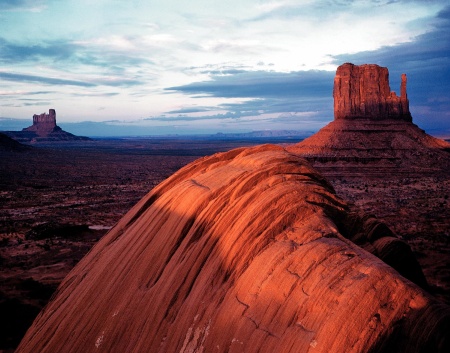
Adams didn’t do much color work because he thought, correctly, that the technical tools did not yet exist for him to express himself the way he could in black and white. With the advent of digital photography and computers that has changed. Nevertheless, Adams didn’t do much color photography so I thought there might still be western landscapes that he had not already done and done better than anybody else. But no, wherever you go, whatever you shoot, Ansel Adams has already been there, signed the guest book, and photographed the place better than anybody else.
So, when I saw this photo, I decided the best thing I do for my camera was put the poor thing out of its misery by taking it out in the backyard and shooting it. . . .
Eyes
Posted August 17, 2009 by nakedlandscapesCategories: Uncategorized
Recent research indicates that people behave differently when they know they are being watched. That is true of Ravens as well. If they know or even think they are being watched when caching food, they either only pretend to cache it or cache it and come back and move it when they are certain they are not being watched. That’s important since Ravens will steal from one another, sort of like humans.
But not only do we behave differently when we know — or think — we are being watched, we also behave differently if there is a picture of eyes watching. Some workplaces have coffee machines along with requests that users make a small contribution to help pay for the coffee. More people contribute if there is a photo of eyes on the wall. In experiments allowing participants to share benefits with one another or keep them for themselves, more sharing takes place if a photo of eyes is posted in the room where the experiment takes place. Olivia Judson recently wrote about these experiments and others.
You’re being watched:
Male Models
Posted August 14, 2009 by nakedlandscapesCategories: Uncategorized
You seldom see males modeling nude. Perhaps this is because historically much nude photography has been by heterosexual males who prefer the female form. (With notable exceptions) Or perhaps it is because the lines of the male body aren’t as aesthetically appealing. Or maybe most males look much like the real model for Michelangelo’s David which you see here.

It’s a cactus. Really.
Posted August 11, 2009 by nakedlandscapesCategories: Uncategorized

In the Navajo creation story, First Man and First Woman have an argument that leads to a four-year separation between all the men and all the women. During that time, the women use various aids, including cactus, to satisfy themselves. Mischief resulted. Fortunately for the women that did not happen in this, the fifth world, of Navajo metaphysics. In this world, it would have hurt quite a lot one suspects.
But is it Art?
Posted May 25, 2009 by nakedlandscapesCategories: Art, Photography
Tags: Art, Fine Art Photography, George Orwell, History of Photography, Julia Cameron, Nadar, Timothy O'Sullivan
During my recent winter of photographic discontent, I roamed around the internet looking at pictures of naked women. Which is pretty much all I saw, pictures. There wasn’t much art being committed. Which led me to the question of what exactly do I mean when I say “art” and how does it apply to photography of landscapes and nudes.
George Orwell laid out the first, and maybe only, test. He said, “For any work of art there is only one test worth bothering about — survival.”
Orwell didn’t prescribe a survival time frame, but a century seems about right to me. If people are still looking at a photograph 100 years after it was made, we can safely call it art, even if it is something we personally don’t like.
For most photography then, it is too early to tell what is art and what isn’t. Photography was invented about 1822 and the first surviving print is from 1826. Here it is.
And although photography’s inventors were artists, the technology to produce fine art prints took time to develop. There is a still life by Daguerre dated 1837 and Henry Fox Talbot made some photographs in the 1840’s that qualify, but it isn’t until the 1860’s that we began to see photographs that manifestly qualify as art under the test of survival. (Although we should note here the photographs that the Frenchman Nadar made of Sarah Bernhardt, especially this one from 1859.
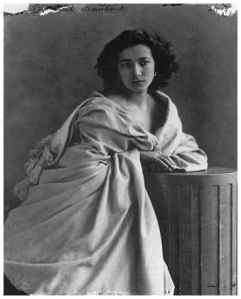
There you have the beginning of modern glamour photography. Note the romantic pose, the wistful expression, the lighting and the drapery.
And, of course, documentary photography can be art and many photographs of the Civil War are, but they are beyond the scope of this modest blog which limits itself to landscapes and nudes.)
Although she didn’t do either landscapes or nudes we must pause to note Julia Margaret Cameron who may be the first true artist who worked in the photographic medium. She spent the last eleven years, from 1868 to 1879 of her life making photographic portraits which are undoubtedly art. Here are a couple of examples. The first is of a 16 year old girl photographed in 1864.
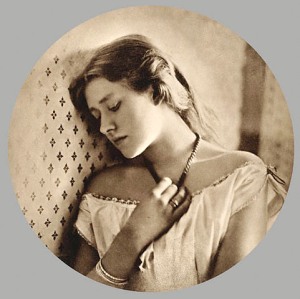
This one is a photograph Cameron made in 1867 of her niece, Julia Jackson, who was the mother of Virginia Wolfe. Jackson was Cameron’s favorite photographic subject.
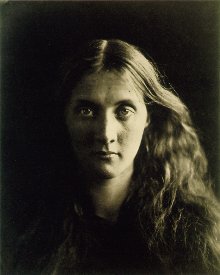
The first landscape artist to use photography was Timothy O’Sullivan. (1841-1882) About 160 years have passed since his photograph of Canyon de Chelly was made and no one can mistake it for anything other than art. It has survived. No wonder. Look at it. Note the composition. The tones. No modern photograph of the scene has ever come close to its aesthetic perfection.
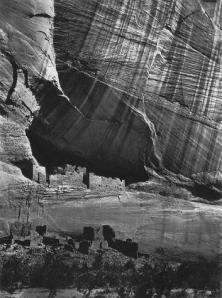
He made many other photographs which are art. We’ll say more about him in a later post but we’ll leave you today with one more, taken in Vermillion Canyon in 1870.
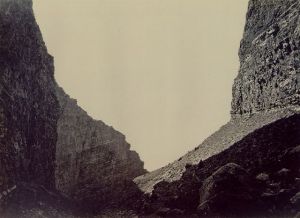
In our next post in this series we’ll make some educated guesses about the work of Stiechen, Stieglitz, Weston, Adams, Bernhardt, Cunningham and a few others from the early 20th Century and how it fares under Orwell’s test.


